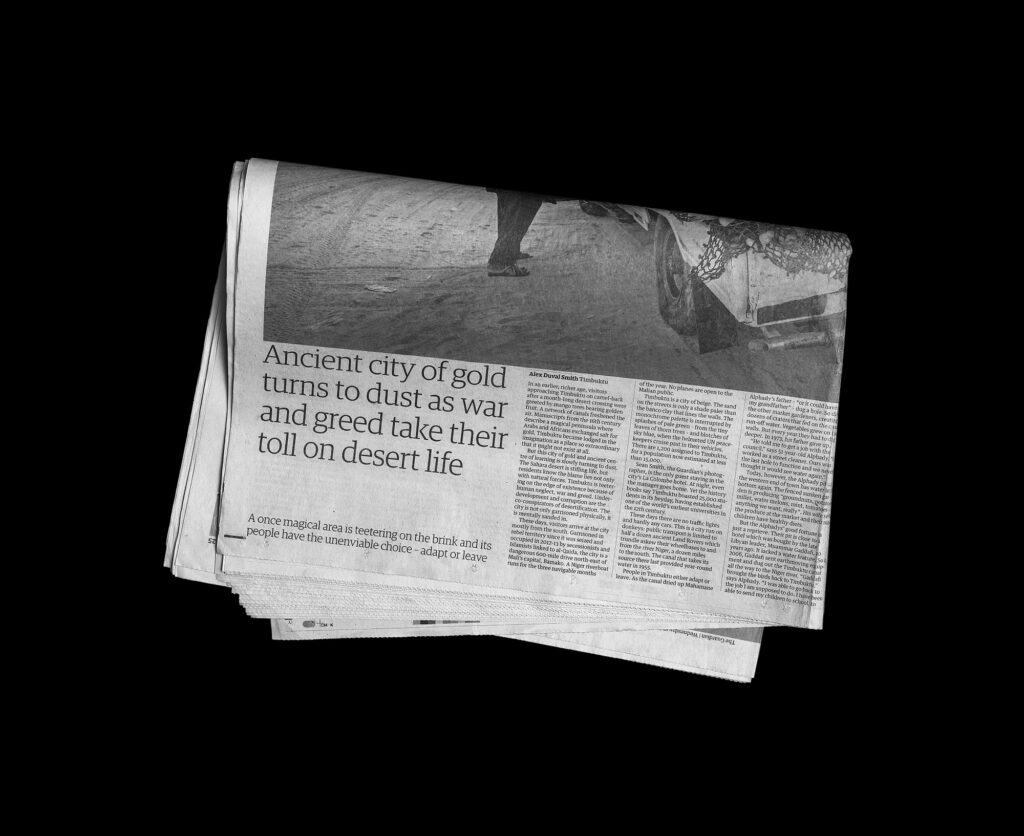Ancient City of Gold Turns to Dust

Ancient City of Gold Turns to Dust
In 2012, war broke out in Mali. Timbuktu was one of the first cities to fall into the hands of the rebels. The French forces and UN peacekeepers who intervened made the rebels retreat, but the gradually expanding Sahara Desert and the general turmoil in Mali continue to threaten Timbuktu. The Guardian journalist Sean Smith, who visited the city in 2016, concludes his travelogue by saying, “Timbuktu needs to be put back on the map one way or another – or risk finally becoming that mythical place its name has long stood for”.
Smith’s description gives the impression that nothing much has changed in the city since René Caillié brought the first messages from there two hundred years ago. The walls of the houses are the same colour as the city streets. You can see a few cars here and there, but donkeys are mainly used as a means of transportation. Accessing other cities is almost as difficult as it was two hundred years ago. There are no paved roads and merchants make no secret that they have to pay “customs” to armed groups to safely travel through the desert. Salt and fabric continue to be important commodities, and the city’s libraries must still be protected from conquerors. Timbuktu’s only trump card seems to be that the three syllables of its name still have a magic spell over people in Europe and the United States.